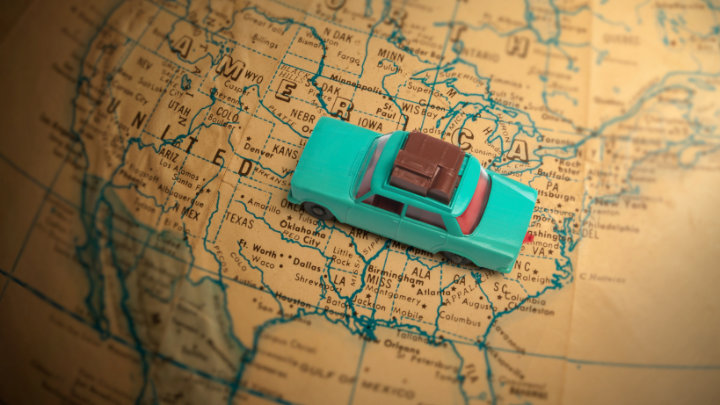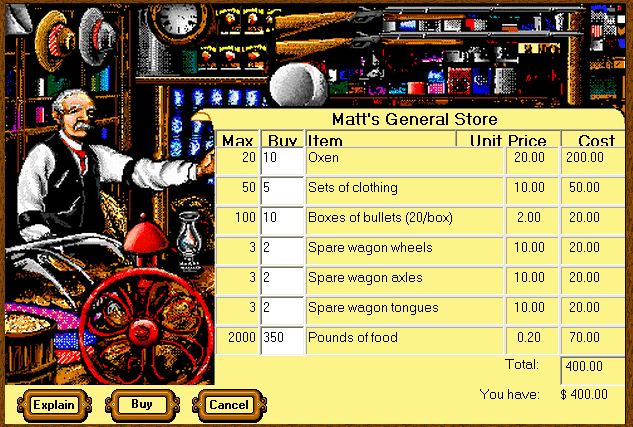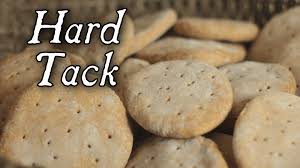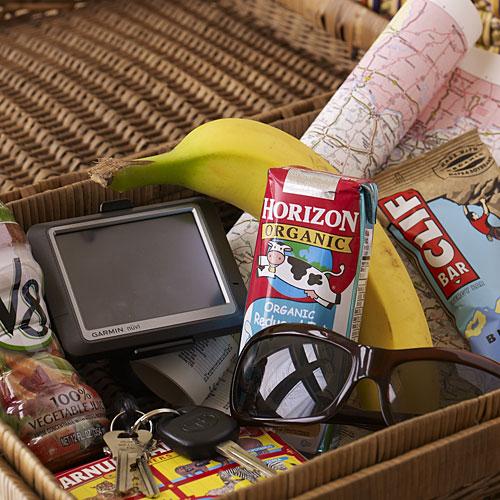By: Amelia Chen

Source: http://ministry-to-children.com/6-road-trip-bible-games-for-family-vacation-car-time/
I specifically made sure I had a giant bag of pretzels for my trek from Wisconsin to California, knowing the rest of my diet would be supplemented with leftovers from my stops along the way. And if I get truly desperate, McDonald’s would not fail me. The prospect of a road trip was always kind of exciting to me as a kid. Later down the road (literally and figuratively), I would come to regret being trapped in a metal box for hours at a time. I loved packing up the remainder of our perishables in a cooler, making a huge container of hard boiled eggs the night before, and piling up all the half-opened bags of chips and nuts hiding in our pantry. A road trip was, essentially, a valid excuse to sit and snack for hours at a time.
Driving on my own, though, proved to be more difficult. By the time I arrived in the Badlands, I felt like I had really taken for granted how easily we avoid starvation on cross-country road trips these days. How did they get by in the 1800s with just wagons and whatever was going on with the weather to rely on food during the numerous months spent traveling?

Source: https://kloipy.wordpress.com/2012/04/25/4-easy-unethical-steps-to-beating-the-oregon-trail/
I thought of the Oregon Trail. More than everyone’s favorite educational computer game, the Oregon Trail was a trail that connected around 2000 miles (3200 km) from Missouri to Oregon. It wasn’t until 1836 that wagons could travel on the trail. That’s as much general history as I’ll go into because we are here to talk about food. Thinking about what provisions would last four to six months is essentially a lesson in food preservation. There existed many guidebooks that had recommendations for how many pounds of flour, meat, salt, sugar, and dried goods to bring; additionally, they listed utensils and other tools needed to prepare food on the trail. Arguably, the most important of these supplies were flour and meat.
Contrary to what I imagined as the most popular meat provision, beef jerky did not pop up all that often in my search for Oregon Trail recipes. Even back then, it was all about the bacon. However, this was not exactly the bacon we are all familiar and obsessed with today. “Bacon” referred to any cut of pork from the sides, hams, or shoulders that was heavily salted for preservation, and was not smoked. Large hunks were stored in barrels of brine to be used as needed, following a soaking to remove excess salt. Today, we call this salt pork. Salting is an important method of food preservation because salt draws moisture out of meat, which inhibits microbial growth. Though successful, preserving meat on the road proved difficult, especially for more fattier chunks; as the fat melts, meat spoils. To prevent this, especially in hotter climates, some guidebooks suggested storing the meat surrounded with wheat bran.

Source: https://www.youtube.com/watch?v=FyjcJUGuFVg
For a trip on the Oregon Trail, it was recommended to bring about 150-200 lbs of flour per person. Flour was available in three ground forms: superfine, middlings, and shorts. Superfine flour was closest to the white flour we use today. Middlings came from just beneath the bran layer when it was removed to make superfine flour. Since middlings required further refining, it was often sold for cheap without any other treatment. Shorts was coarse flour described as a cross between wheat bran and whole wheat and required sifting and grinding before use. Flour was stored in well-sewn canvas sacks for to survive the journey along the Oregon Trail. It was mostly used to make bread, which had to be baked daily with the help of sugar and leavening agent, over very hot coals, in a cast iron pan. Sugar, imported from the Caribbean or produced in Louisiana, was sold in bricks or cones referred to as “loaves” that had to be ground and sifted prior to use. The available leavening agent was saleratus, which consisted of aerated salt that was mixed with cream of tartar, similar to today’s baking soda. A less-appealing alternative to bread, used on the Oregon Trail, was known as “hardtack”. Hardtack was a mixture of only flour and water, which was baked long periods of time at a low temperature. Essentially used as a cracker, hardtack was eaten plain or dunked in coffee during periods of rain….basically how I start all of my mornings.

Source: http://www.cookinglight.com/eating-smart/smart-choices/healthy-convenience-store-foods
With Thanksgiving just around the corner, I know I’m thankful for pretzels, M&M’s, ready-made chicken sandwiches, and local restaurants to keep me fed with little effort during my cross-country journey. I’m thankful for advances in food preservation that allow me to have my bread and bacon on the road the way we know it today.
References
BLM National Historic Oregon Trail Interpretive Center. “Recipes on the Oregon Trail.” 2004. <http://personal.my180.net/thesmiths/oregontrailrecipes.html> 31 October 2016.
Durand, F. “Less Meat, More Flavor: Salt Pork.” 5 Nov 2005. The Kitchn. <http://www.thekitchn.com/less-meat-more-flavor-salt-por-68491 > 31 October 2016.
“Foods Carried on the Oregon Trail.” 25 Sept 2016. Preparedness Advice. <http://preparednessadvice.com/food_storage/foods-carried-on-the-oregon-trail/#.WBN7tugrJhE > 31 October 2016.
Olver, L. “Frontier American foodways.” 3 Jan 2015. FoodTimeline.org. <http://www.foodtimeline.org/foodpioneer.html> 31 October 2016.
Williams, J. “Food on the Oregon Trail.” 2007. Oregonpioneers.com. <http://www.oregonpioneers.com/FoodChoices.htm> 31 October 2016.






Leave a Reply